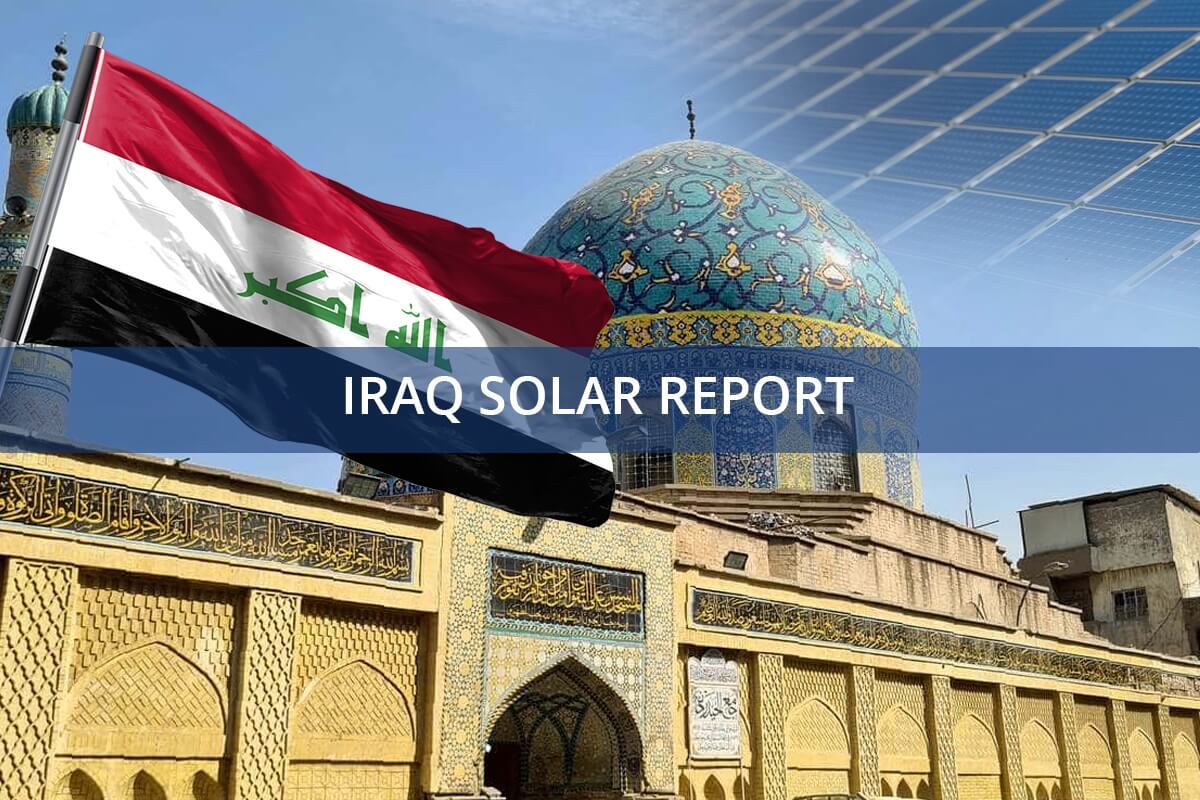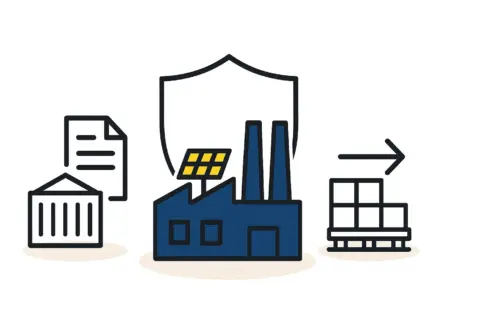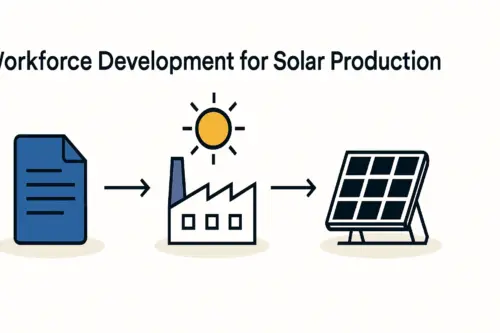While the global solar market is intensely competitive, a focused local strategy in an emerging economy can present significant opportunities. For entrepreneurs and investors eyeing the Iraqi market, the most viable path to success lies not in residential sales but in aligning a new manufacturing facility with the nation’s largest energy consumers: government bodies and the oil and gas industry.
This approach transforms a solar module factory from a simple production plant into a strategic asset, positioned to supply a cornerstone of Iraq’s economic and energy future. Understanding this dynamic is key to building a resilient and profitable enterprise.
Understanding the Demand Landscape in Iraq
The primary driver for a new solar module factory in Iraq is not speculative future growth, but a series of well-defined, large-scale procurement programs initiated by the state and major industries. These tenders create a predictable, high-volume demand that a local manufacturer is uniquely positioned to meet.
The National Renewable Energy Mandate
The Iraqi government has set an ambitious target of generating 12 GW of power from renewable sources by 2030. This goal is not merely a policy statement but a strategic imperative designed to diversify the energy mix, reduce reliance on fossil fuel power plants, and improve grid stability. This government commitment creates the foundational demand for solar components over the next decade, ensuring a stable market for new investors.
Key Customer Segments: Government and Industry
For a new manufacturer, the most direct route to market is through large-scale tenders. Two segments stand out:
-
Government Reconstruction Projects: The Ministry of Oil & Gas (MoO) has tendered for projects totaling 3.5 GW of solar capacity. The Reconstruction Fund for Iraq (ReFAATO) is also actively financing infrastructure projects, including power generation, in areas recovering from conflict. These government-backed initiatives represent substantial, consolidated demand for solar modules.
-
The Oil & Gas Sector: In a significant move toward decarbonization, Iraq’s oil and gas companies are increasingly replacing gas flaring operations with dedicated solar power plants to run their facilities. The result is a powerful private-sector demand for high-durability modules capable of performing in harsh desert environments. An entrepreneur with existing relationships in this sector may find this a particularly accessible market.
The Strategic Advantage of Local Manufacturing

In the context of national tenders, establishing a local factory is more than a logistical choice—it is a critical competitive advantage. International suppliers can ship modules to Iraq, but a local producer offers value that imports alone cannot match.
Meeting Local Content Requirements
Many government tenders in emerging economies, including Iraq, include “local content” provisions. These requirements stipulate that a certain percentage of a project’s value must be sourced from within the country. These provisions are designed to stimulate local industry, create employment, and ensure that national funds contribute to domestic economic growth.
Ready to make big Profits?
The solar Industry is Booming
WE HELP NEWCOMERS to the solar industry start their own solar module production line. Customers can make BIG PROFITS by selling modules and finding investors, without wasting money and time on things they don't need!
A factory producing “Made in Iraq” solar modules is perfectly positioned to meet these requirements. This gives a local bidder a significant competitive edge over an international counterpart, even if the per-module cost is slightly higher. For project developers bidding on these large tenders, partnering with a local module supplier becomes a strategic necessity.
Enhancing Supply Chain Security and Control

Large-scale energy projects are critical national infrastructure. Relying on long international supply chains introduces risks of delays, shipping damage, and geopolitical disruption. A local manufacturer de-risks the procurement process for these major projects. It offers:
- Reduced Lead Times: Modules can be delivered directly from the factory to the project site.
- Greater Oversight: Project owners can inspect production and ensure quality standards are met.
- Simplified Logistics: Eliminates the complexities of international shipping and customs clearance.
This level of supply chain security is highly attractive to government agencies and industrial giants responsible for delivering critical energy infrastructure on time and on budget. Learning how to start a solar panel manufacturing business is the first step in creating this strategic local advantage.
A Practical Approach to Market Entry

Targeting this specific niche requires a deliberate, well-planned strategy. The factory’s scale, technology, and business model must align with the demands of large-scale industrial and government projects.
Aligning Factory Capacity with Tender Volumes
A new entrant does not need to build a gigawatt-scale facility from day one. A semi-automated production line with an annual capacity of 50–100 MW makes for an excellent starting point. This scale is large enough to supply significant portions of a major tender while keeping the initial capital investment manageable. Such a turnkey solar module manufacturing line can be designed specifically to produce the robust, high-efficiency modules required for utility-scale and industrial projects.
Focusing on Industrial-Grade Modules
The product must match the market. Tenders for reconstruction and oil field projects will specify high-performance, durable modules certified to international standards (e.g., IEC 61215, IEC 61730). A new factory should focus on producing modules that meet these specifications, rather than smaller, lower-cost modules intended for the residential market. Focusing on these specifications ensures the product is immediately relevant to the target customer base.
Developing a Credible Business Case
Success depends on a robust financial and operational plan. Based on experience from J.v.G. turnkey projects in similar markets, a detailed feasibility study is essential. A comprehensive solar panel manufacturing business plan should outline target customers, production costs, pricing strategy, and financing requirements. This document serves as the blueprint for securing investment and guiding the project through its initial phases.
Frequently Asked Questions
What is a realistic initial investment for a 50 MW solar factory in Iraq?
While costs vary based on land, building, and equipment choices, a typical investment for a 50 MW semi-automated line ranges from 4 to 6 million USD. This includes machinery, training, and initial raw materials. A detailed business plan is needed to refine this estimate for a specific project.
How complex is the technology to operate a solar module factory?
Modern solar module production lines are highly automated. The core processes—stringing, lamination, and testing—are managed by sophisticated machinery. A key to success is providing proper initial training for a local team of around 25–30 employees, which is typically included in a turnkey line package. A background in photovoltaics isn’t required to own and manage the operation successfully.
What are the primary non-financial risks to consider?
Operating in Iraq involves navigating a complex regulatory and security environment. Key risks include bureaucratic delays, grid instability affecting factory operations (requiring backup power solutions), and regional security concerns. These risks are manageable but require thorough due diligence, strong local partnerships, and a resilient operational plan.
How long does it take to get a factory operational?
From the final investment decision to the first module produced, a realistic timeline is approximately 10 to 14 months. This includes about 4–6 months for machine manufacturing and shipping, followed by 4–8 months for building preparation, installation, commissioning, and staff training.
A Focused Path to Success in Iraq’s Solar Market
For the discerning investor, the opportunity in Iraq lies not in competing in a crowded global market but in establishing a focused, local manufacturing presence to serve a clearly defined set of high-volume customers driven by national priorities. By aligning the factory’s output with the needs of government tenders and the oil and gas industry, a new enterprise can become an indispensable part of the country’s energy transition, building a profitable business on the foundation of national reconstruction and economic development.






